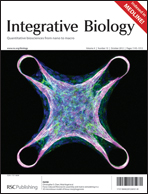Microscale fluid flow analysis in a human osteocyte canaliculus using a realistic high-resolution image-based three-dimensional model
Abstract
Osteocytes play a pivotal role in the regulation of skeletal mass. Osteocyte processes are thought to sense the flow of interstitial fluid that is driven through the osteocyte canaliculi by mechanical stimuli placed upon bone, but how this flow elicits a cellular response is virtually unknown. Modern theoretical models assume that osteocyte canaliculi contain ultrastructural features that amplify the fluid flow-derived mechanical signal. Unfortunately the calcified bone


 Please wait while we load your content...
Please wait while we load your content...